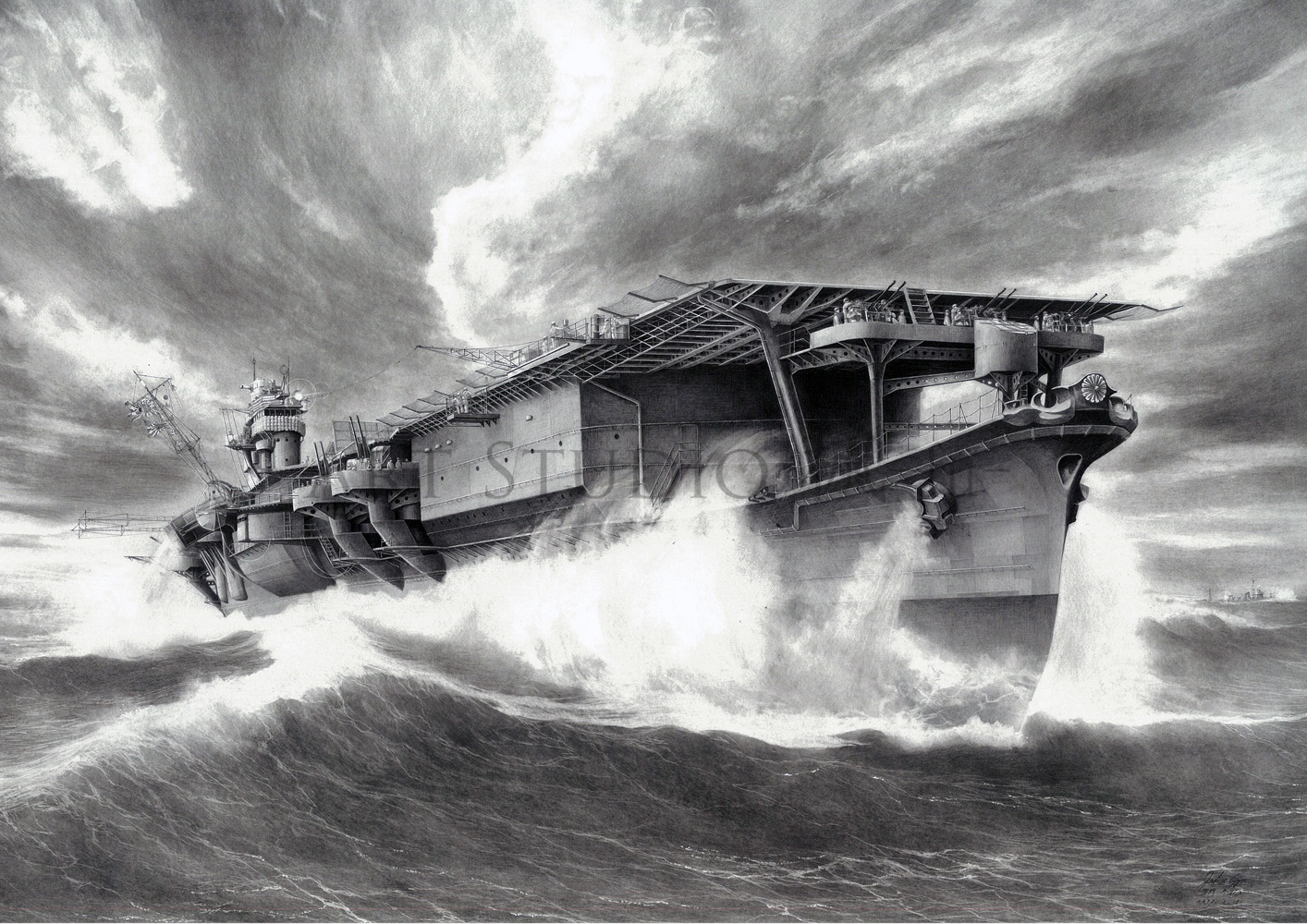平素はご愛顧を賜り、厚く御礼申し上げます。
誠に勝手ながら、夏季休業のため2025年8月9日(土) ~ 2025年8月17日(日)終日まで、商品の配送およびお問い合わせへの対応につきまして、お休みさせていただきます。
また、上記期間中にいただいたお問い合わせにつきましては、2025年8月18日(月)より順次対応させていただきます。多少お時間をいただく場合もございますが、あらかじめご了承くださいますようお願い申し上げます。
平素はご愛顧を賜り、厚く御礼申し上げます。
誠に勝手ながら、夏季休業のため2025年8月9日(土) ~ 2025年8月17日(日)終日まで、商品の配送およびお問い合わせへの対応につきまして、お休みさせていただきます。
また、上記期間中にいただいたお問い合わせにつきましては、2025年8月18日(月)より順次対応させていただきます。多少お時間をいただく場合もございますが、あらかじめご了承くださいますようお願い申し上げます。
ミリタリー雑誌『丸』の2025年3月号で潜水艦 伊168を描いた作品が表紙に採用されました。今後も採用が予定されていますので、お楽しみください。
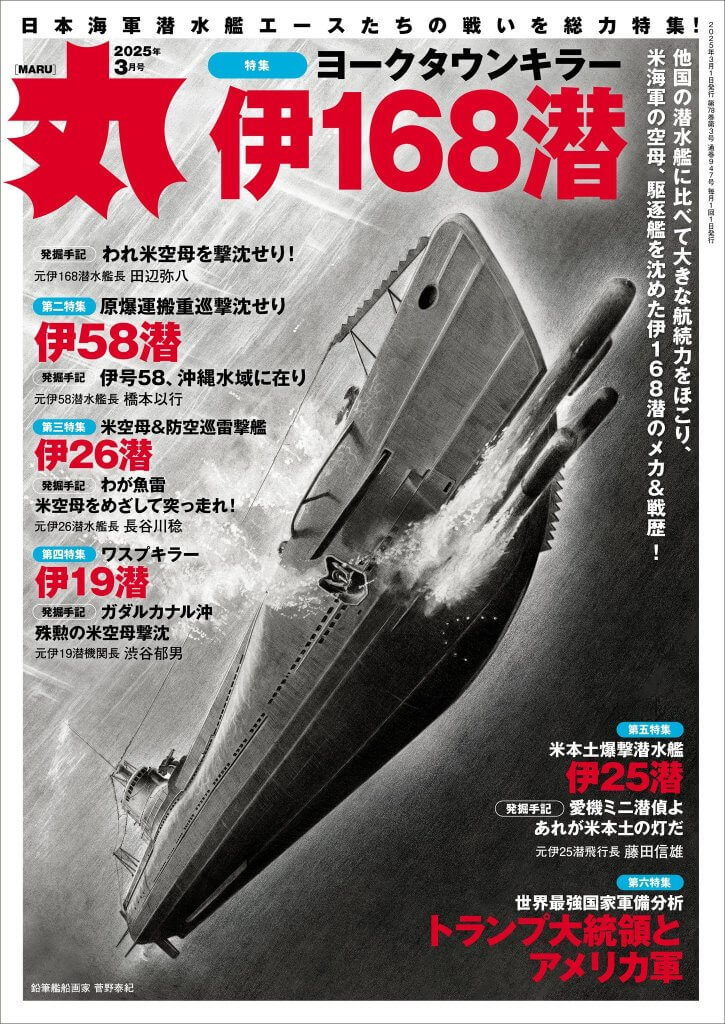
2025年3月2日の産経新聞記事に活動が掲載されました。
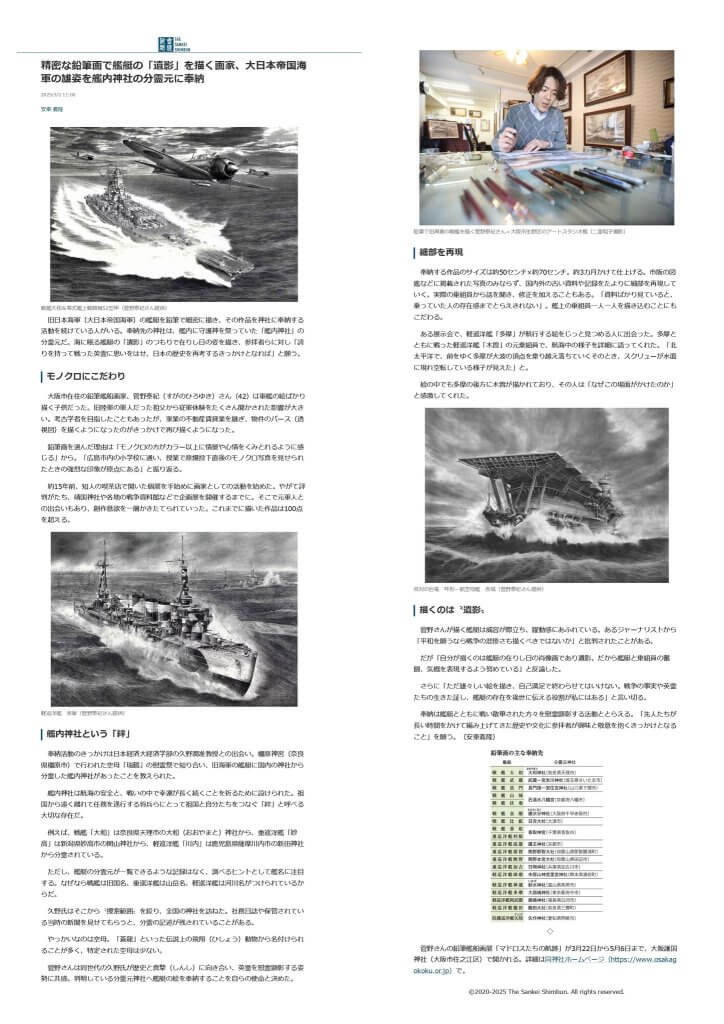
展覧会名:大阪護國神社 終戦80年特別企画展『菅野泰紀鉛筆艦船画展 「マドロスたちの航跡」鉛筆艦船画と艦内新聞で紐解く軍艦の世界』
会期:令和7年3月22日から5月6日(4/18、4/19、4/20は休館)
作家在廊日:5月3日、5月4日、5月6日:いずれも10時 – 16時)
講演イベント:4月26日(14時から)
靖國神社崇敬奉賛会青年部あさなぎ西日本支部とのイベント

注目の新作「双対の巨竜 阿形 -航空母艦加賀- リテイク版」のお披露目も予定しています。
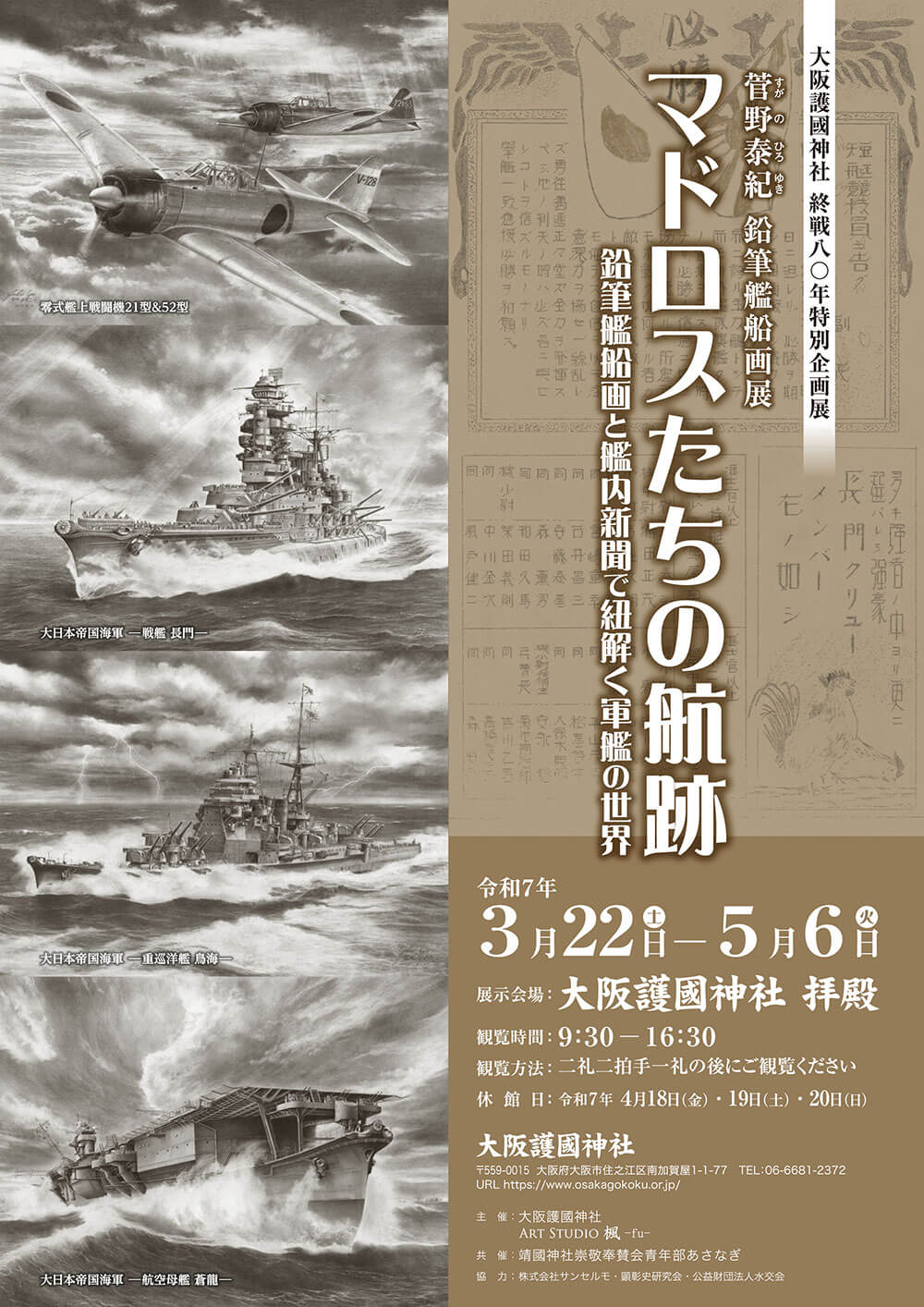
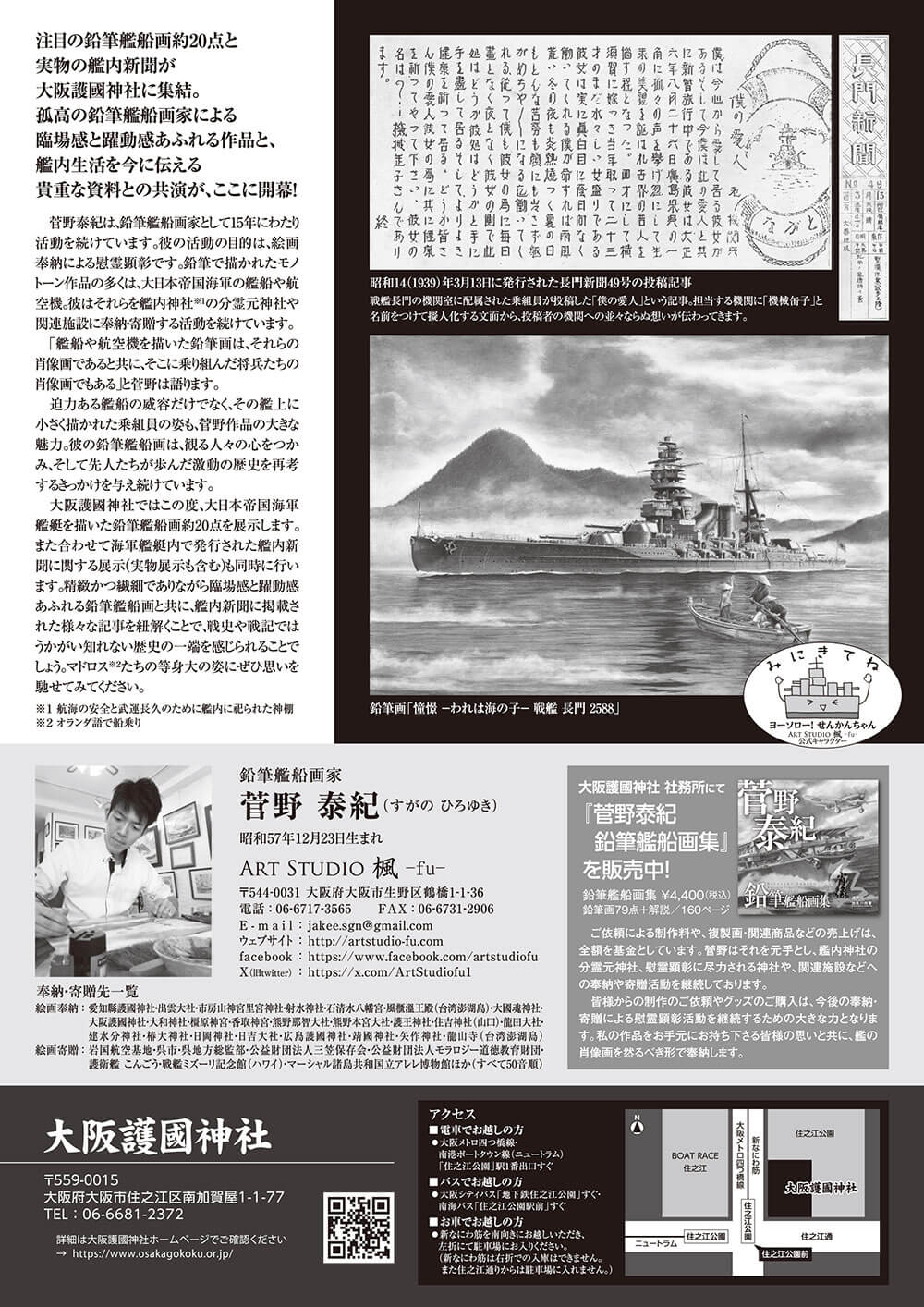
ダウンロードはこちら
過去の展覧会でのギャラリートーク&ライブドローイングの様子
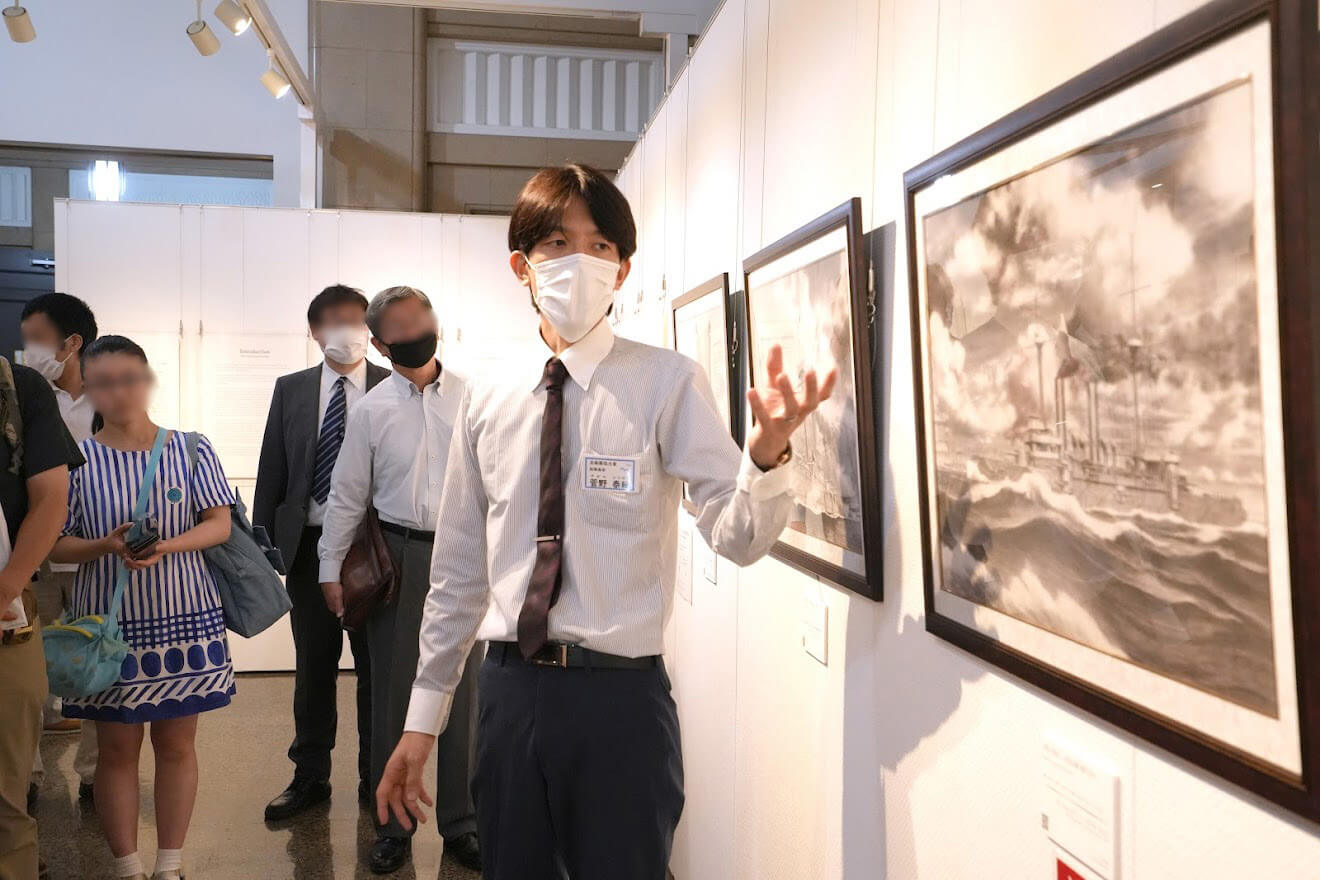
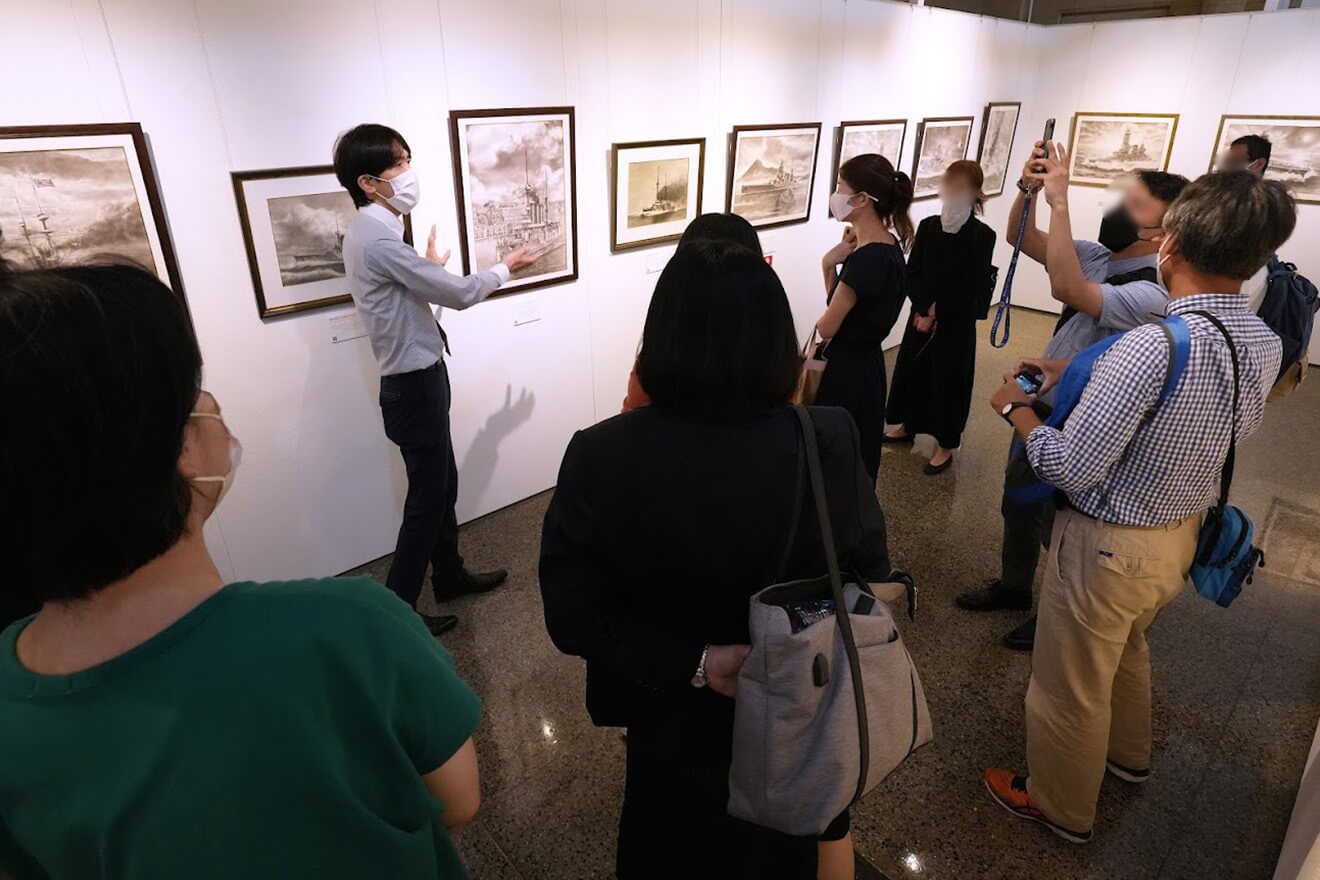
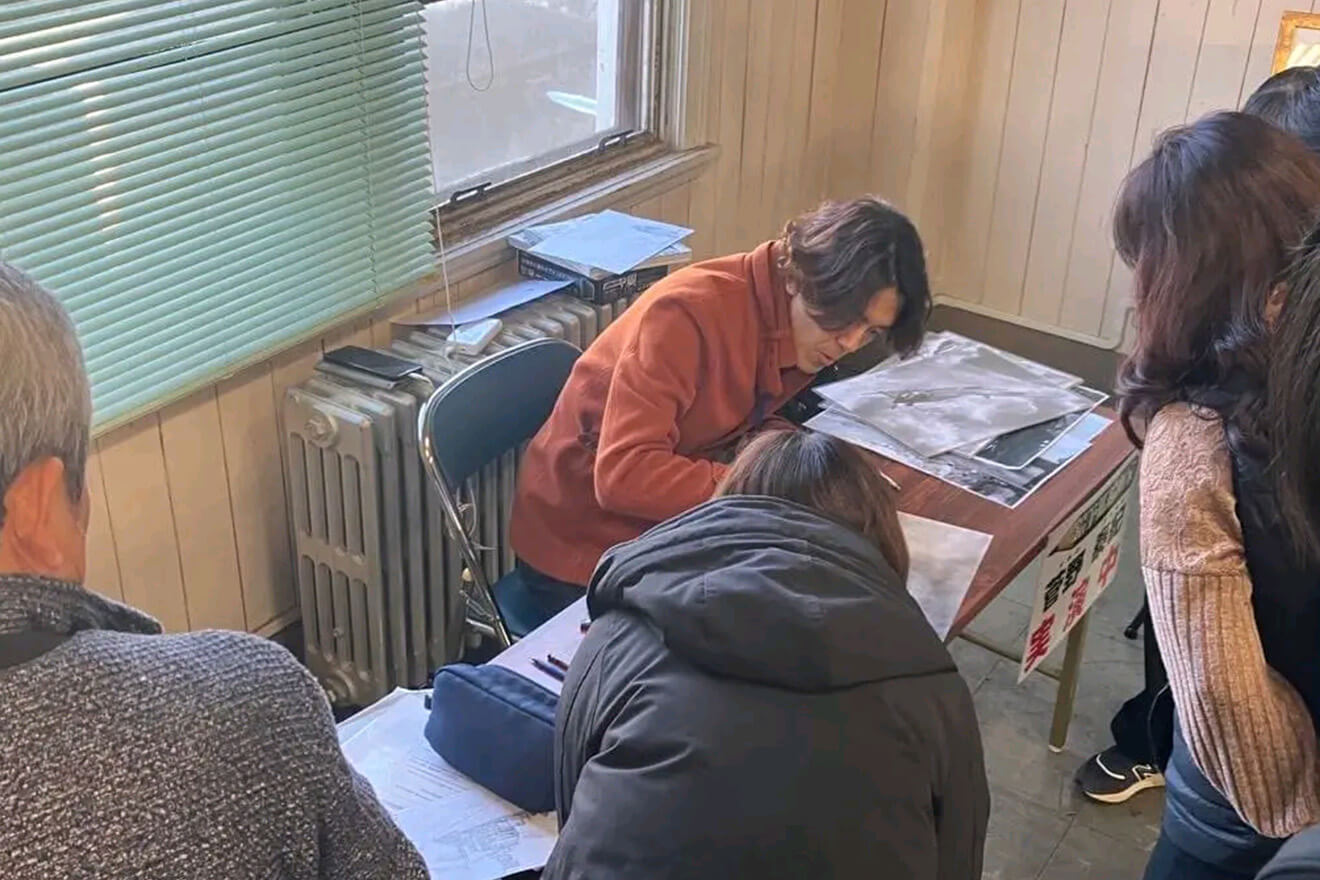

平素はご愛顧を賜り、厚く御礼申し上げます。
誠に勝手ながら、冬季休業のため2024年12月28日(土) ~ 2025年1月5日(日)終日まで、お問い合わせへの対応につきまして、お休みさせていただきます。
また、上記期間中にいただいたお問い合わせにつきましては、2025年1月6日(月)より順次対応させていただきます。多少お時間をいただく場合もございますが、あらかじめご了承くださいますようお願い申し上げます。
「焔弾の射手 -Diamond Shield- 護衛艦こんごう」と「White Base -護衛艦 かが-」をECサイトで取り扱い始めました
「焔弾の射手 -Diamond Shield- 護衛艦こんごう」はこちらから
「White Base -護衛艦 かが-」はこちらから
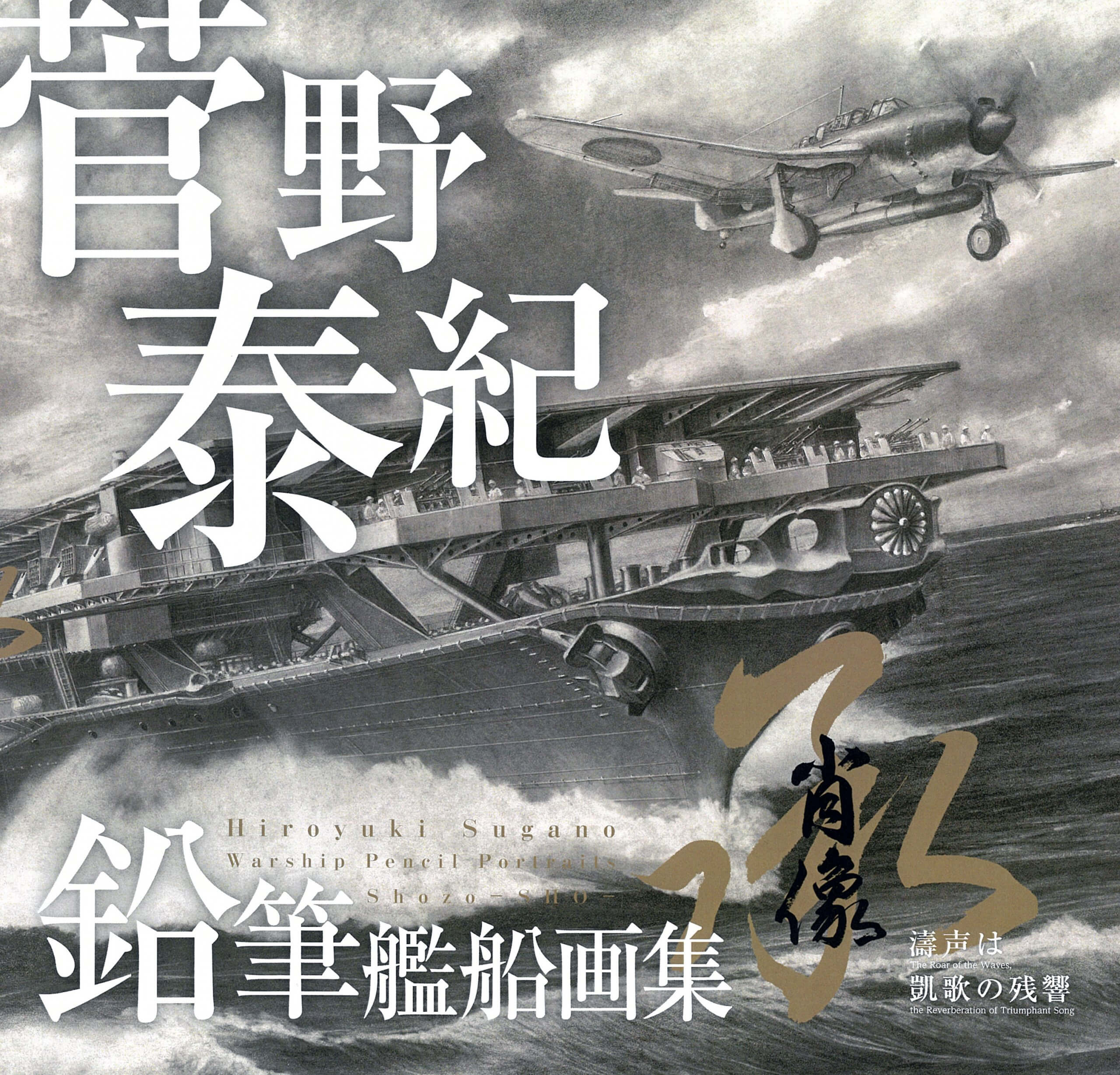
「菅野泰紀鉛筆艦船画集 肖像 -承- 濤声は凱歌の残響」販売中!
お値段:4,800円(税・送料込み)
ページ数:160頁 サイズ:24cm×25cm
収録点数:79点 言語:日英対訳
クータ・バインディング製本:見開きにズレが無く、ほぼ水平に開く特殊製本
作者の直筆サイン希望者は、その旨明記頂ければ対応可能です。
ご購入はこちらから
7月21日に無事、三沢航空科学館企画展、オープニングセレモニーを行いました。
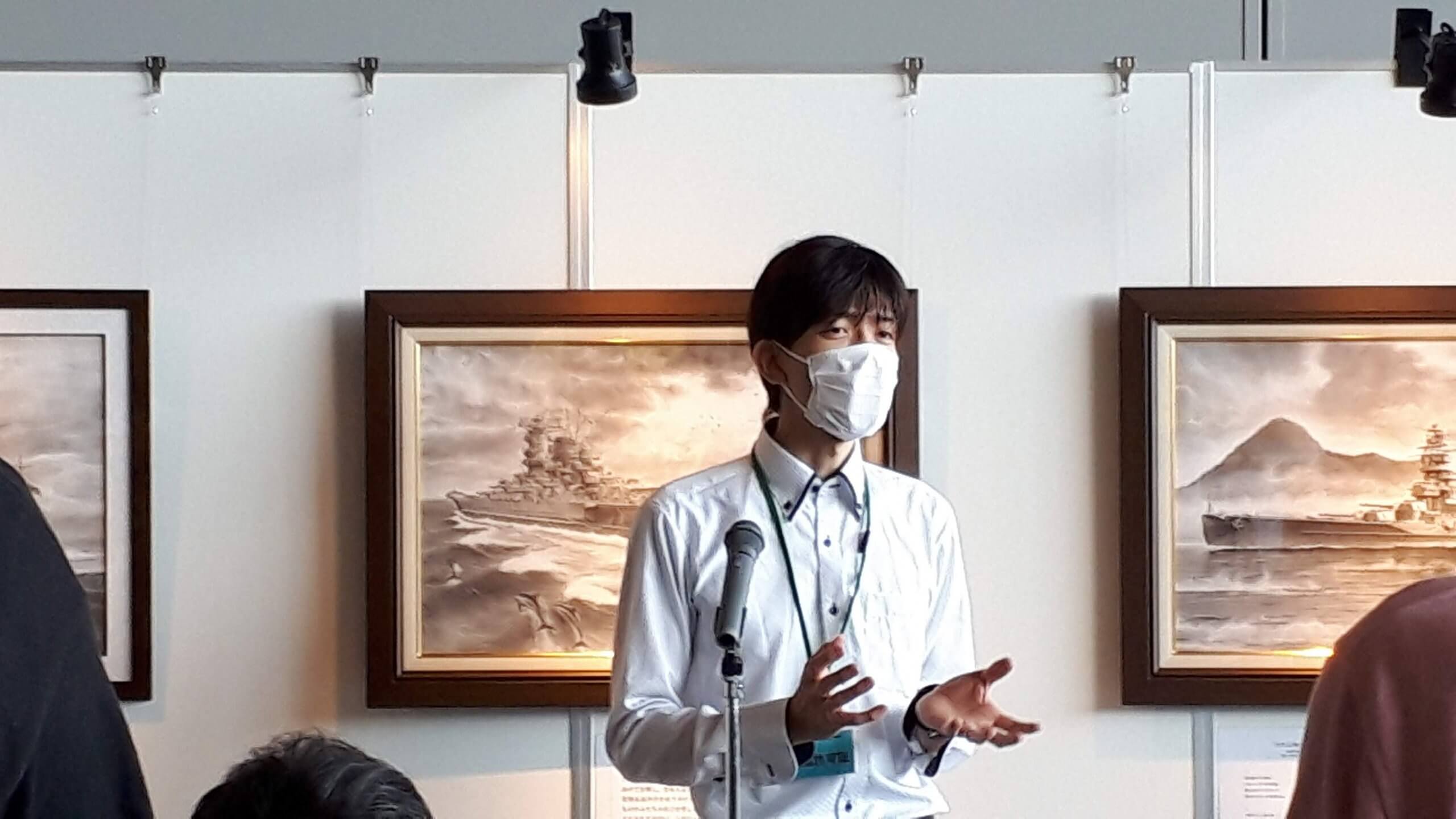
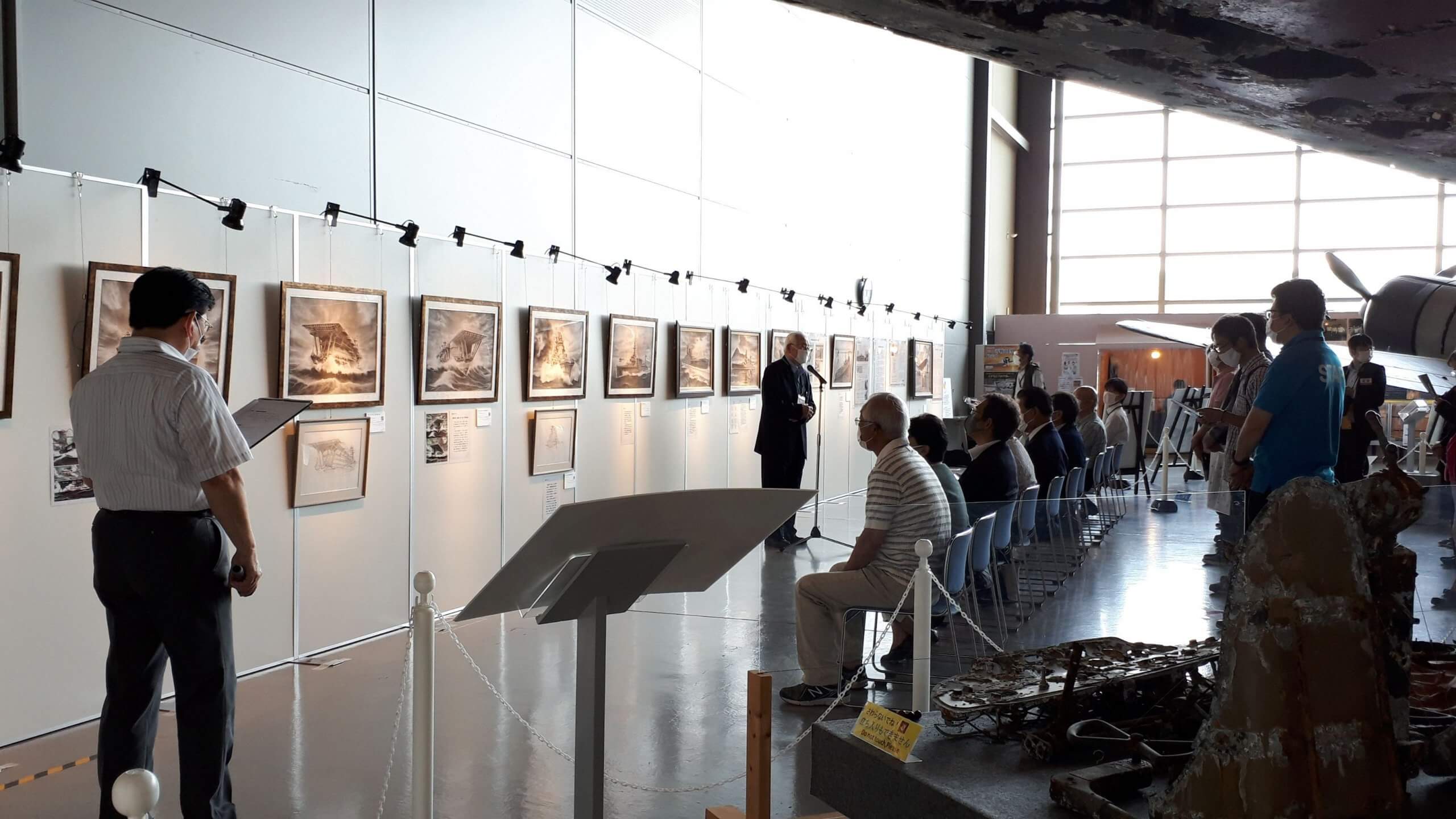
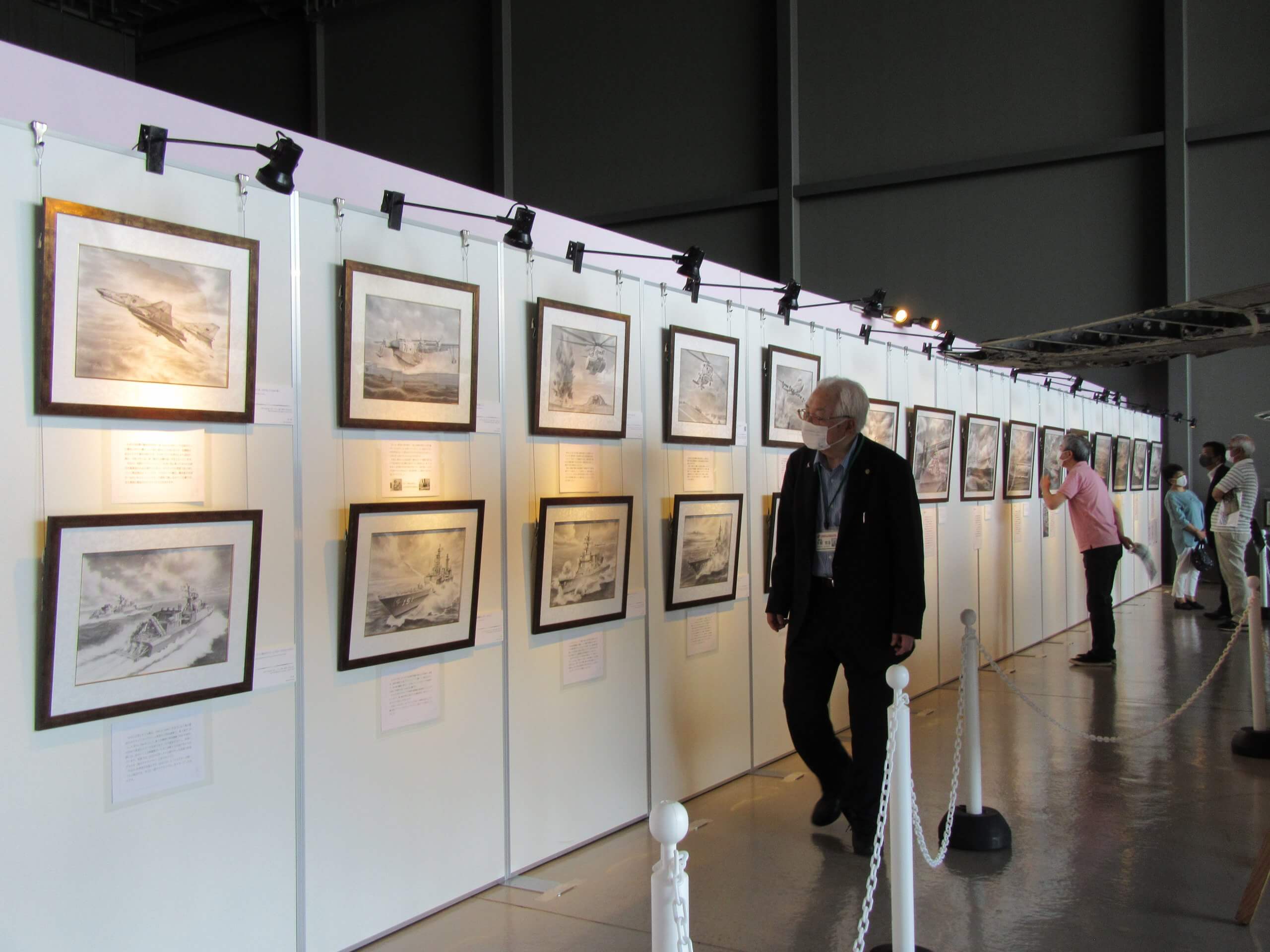
展示を見学される大柳館長
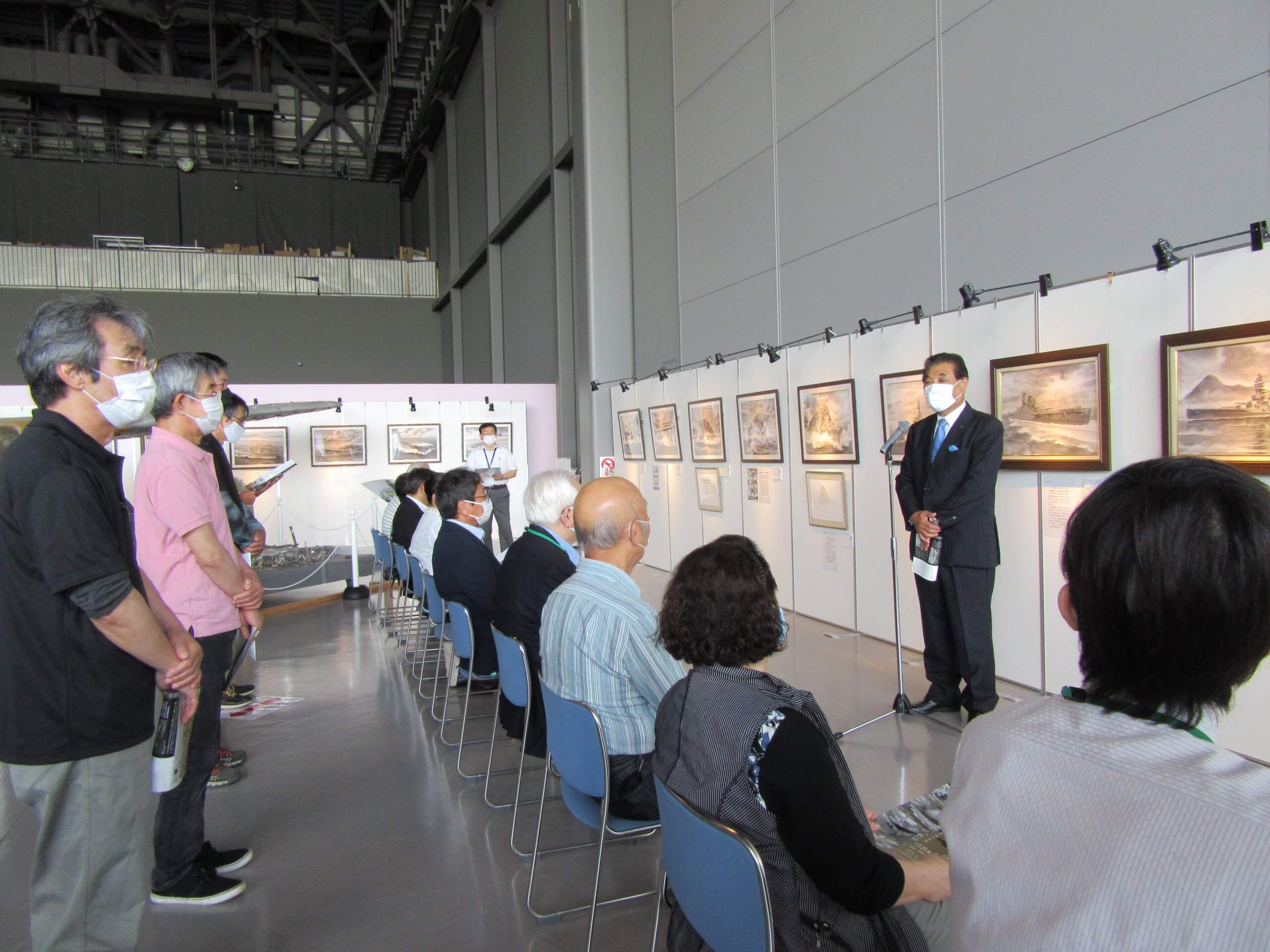
来賓挨拶 蕪嶋神社宮司野俊雄様
青森県立三沢航空科学館企画展「肖像 -序- 菅野泰紀 鉛筆画の世界」を本年7/21~10/25の日程で開催中。
お近くにお立ち寄りの方、是非ともお訪ね下さい!
青森県立三沢航空科学館
蒼龍と飛龍は、②計画(第二次補充計画)で計画・建造された中型空母です。軍縮条約の制限下で建造された蒼龍と、制限を受けずに、より理想的に建造された飛龍の2隻は、先行艦の赤城、加賀と共に空母戦力の増強に大いに貢献しました。大東亜戦争の序盤は、揃って主要な作戦に参加しました。
「龍は激浪を越えて」は、蒼龍、飛龍の2隻を主題として描いた、阿吽の対となった作品です。蒼龍は波を乗り越え艦底を露わにした構図から「阿形」とし、対する飛龍は波に艦首を突っ込んだ構図から「吽形」と見立てています。その一方で、それぞれの作品は異なるコンセプトで制作しています。蒼龍の方は、背景の空に2匹の降り龍が隠れており、艦首を上に向ける蒼龍を昇り竜に見立てた、龍図になっています。また飛龍はミッドウェイ海戦の武勲誉ある艦でもあり、艦載機が発艦する最も空母らしいと思える場面を描きました。
Dragons conquer the raging waves
“Hiryu and Soryu”
The Hiryu and Soryu were built as medium-class carriers as part of the Second Replenishment Plan. The Soryu was built according to the restrictions of the Naval Treaty, but the Hiryu’s construction circumvented those restrictions.
These two ships, along with the Akagi and Kaga, greatly increased Japan’s carrier force. In the beginning of the Greater East Asian War (the Pacific War) these ships played a significant role.
“Dragons conquer the raging waves” features both these ships, and shows their power. The Soryu is cresting a large wave, while the Hiryu is plowing through one. These works have two different concepts. With Soryu, two dragons can be seen descending from Heaven in the background clouds. With the Hiryu, who upheld the honor of the Nation at the Battle of Midway, she is performing what carriers do in war, launching aircraft.
蒼龍は、大日本帝国海軍が②計画(第二次補充計画)で建造した中型空母です。軍縮条約による制限を受けた上、建造中に第四艦隊事件(※)が起きたことで、強度確認のために艦体を輪切りにする大工事が行われるなど、幾度もの計画変更に見舞われ、その建造は多くの困難を伴いました。
大東亜戦争開戦以降、大日本帝国海軍の主力空母の1隻として真珠湾攻撃に参加し、以後も主要な作戦に従事しました。昭和17(1942)年6月5日、日本時間午前7時25分頃、アメリカ空母ヨークタウン所属SBDドーントレス急降下爆撃機十数機の攻撃を受け被弾し、大火災となりました。艦は柳本艦長以下700余名を抱き、日没とともにミッドウェイ沖の海面から姿を消しました。
※艦艇の強度不足が問題視され、大幅な設計の見直しが行われるきっかけとなった、大規模海難事故
Aircraft carrier HIJMS Soryu
“Dragons conquer the raging waves-Aircraft carrier HIJMS Soryu-”
Soryu was a medium-class carrier built under the Second Replenishment Plan. She was built under the stipulations of the Washington Naval Treaty, but while under construction, the Fourth Fleet incident* occurred, so many tolerance tests were taken on her hull to confirm its strength. These tests, along with changes in plans, made construction complicated.
In the Greater East Asian War (the Pacific War), she was one of the main carriers of the Imperial Japanese Navy, and participated in the Pearl Harbor attack. On June 5, Showa 17 (1942), at 7:25 a.m. Japan time, she was caught by some 20 or more SBD Dauntless dive bombers from the American carrier Yorktown, and set aflame.
Along with Captain Yanagimoto and 700 of her crew, she did not survive the day, and disappeared beneath the sea.
*Hulls were found to be of insufficient strength, and many changes were made to their design.
